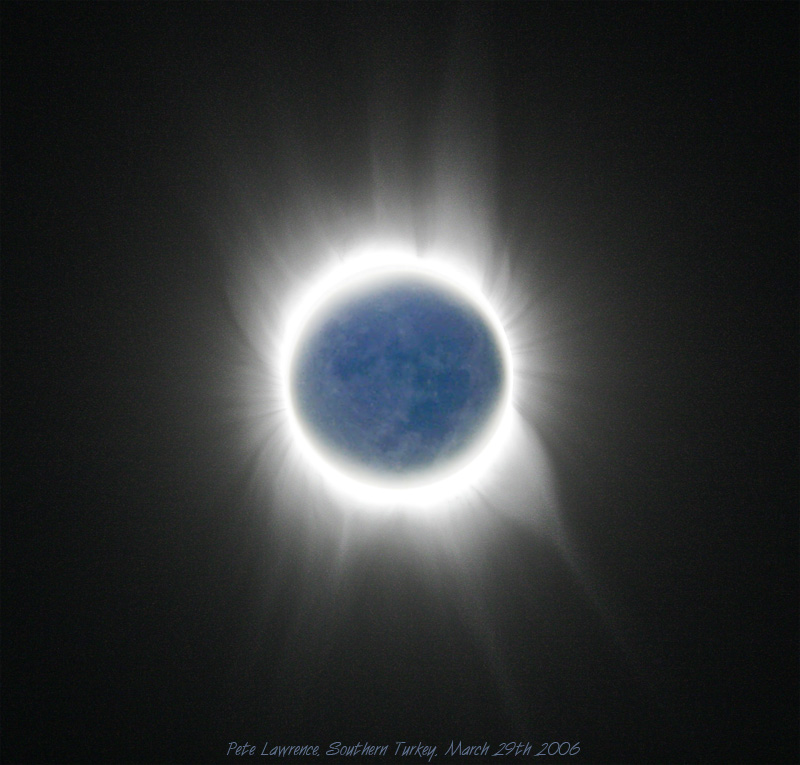
image by Pete Lawrence
Pete Lawrence is fixated on Earthshine - the faint illumination of the dark hemisphere of the Moon by light bounced off Earth. Earlier this month he mosaicked two exposures to make a composite image clearly showing both the sun-lit and Earth-lit secments. Today he combines four exposures to capture the maximum possible Earthshine. Here is his explanation: When the Moon is new from the Earth, the Earth is full from the Moon. The light from the full Earth faintly illuminates the Moon making the new Moon visible against a dark sky. For the most part the sky is way too bright to see this effect. However, at the time of a total eclipse of the Sun, it is possible to capture this phenomenon. This image was taken during March 29 solar eclipse totality from ~20km to the east of Side, Turkey. It’s a composite of four images 1/350s, 1/30s, 1/20s and 1/3s. This is Chuck again: This is maximum Earthshine because an entire terrestrial hemisphere is reflecting light to the Moon, and the entire dark lunar hemisphere is illuminated. Normally Earthshine is viewed when the Moon is 2-3 days past new (and only part of the visible Moon is in Earthshine) and when the Earth is no longer full (and only part of its reflected light hits the Moon).
Technical Details:
March 29, 2006. Skywatcher 80ED Pro f/7 refractor fitted with a Meade 0.63 focal reducer and a Canon 10D DSLR camera.
Related Links:
None!
Yesterday's LPOD: No Crisis in Crisium
Tomorrow's LPOD: Four in a Row
COMMENTS?
Register, Log in, and join in the comments.



